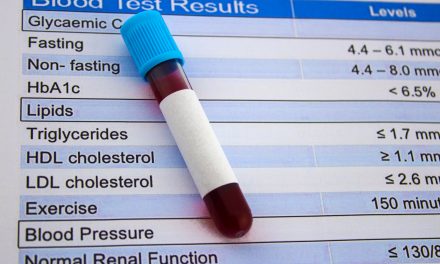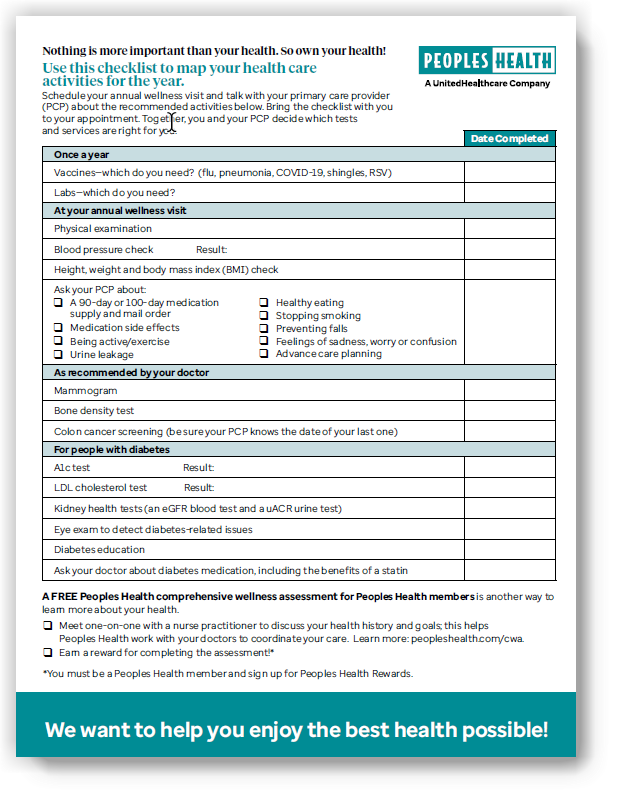1. Pre-existing conditions and Medicare
You can’t be denied coverage under Original Medicare if you have a pre-existing condition.
2. ABCs (and D) of Medicare
- Part A is hospital insurance. Most people paid for this through paycheck deductions or employer contributions over the course of their working careers.
- Part B is medical insurance. It covers things like doctor visits and preventive services, such as flu shots. There’s a monthly premium for Part B unless your premium is paid by the state.
- Part C is Medicare Advantage plans. These plans are offered by private companies that contract with Medicare to administer benefits. With Medicare Advantage, you get all the benefits of Original Medicare, plus you may get extra benefits.
- Part D provides coverage for prescription drugs. It’s offered by private insurance companies that contract with Medicare. If you have Original Medicare, you need to sign up for Part D coverage separately.
Peoples Health offers Medicare Advantage plans.
3. Out-of-pocket costs
With Original Medicare, you’re generally responsible for a percentage of the costs of covered Medicare Part B medical services. Because Original Medicare doesn’t limit your out-of-pocket costs, those amounts can add up.
- You pay a deductible and daily copay amounts for hospital care covered by Medicare Part A.
- One benefit of a Medicare Advantage plan is that your out-of-pocket costs are limited for most, or all, services. This means, once you pay a certain amount, you no longer pay out-of-pocket costs for the rest of the year for those services. Depending on the plan, you can also get more coordinated care at lower costs than with Original Medicare.
4. Benefits Original Medicare doesn’t cover
Original Medicare doesn’t cover everything.
- It doesn’t cover services such as prescription drug coverage, routine vision care, routine dental care or a fitness center membership.
- Original Medicare requires everyone with Medicare to have prescription drug coverage, but you have to join a plan run by a private company approved by Medicare to get the coverage. Part D coverage is through a stand-alone prescription drug plan or some Medicare Advantage plans.
5. Options for more than Original Medicare—Medicare Advantage plans
You must have Medicare Part A and Part B to join a Medicare Advantage plan (Medicare Part C). You can often get more benefits.
- These plans provide coverage for all Medicare Part A and Part B services, such as doctor visits, hospital care, and outpatient care, like lab services and durable medical equipment.
- Many also cover additional benefits, such as routine vision care, routine dental care or a fitness benefit. Most also include prescription drug coverage.
- Some have a $0 monthly plan premium. However, you must continue to pay your Part B premium or have it paid by the state.
6. Medicare Advantage plans for special needs
Some Medicare Advantage plans are for people who meet certain qualifications.
- Some Medicare Advantage companies offer dual-eligible special needs plans, called D-SNPs, for people who qualify for both Medicare and Medicaid. Some D-SNPs require you to have Medicare and full Medicaid coverage to qualify, while others allow partial Medicaid coverage (such as the state paying the Part B premium).
- Some Medicare Advantage companies also offer chronic condition special needs plans, called C-SNPs, for people with severe or disabling chronic conditions (for example, heart failure, cardiovascular disorders and diabetes).
- Another type of special needs plan called an institutional SNP is for those entering an institution or who develop the need for a nursing home-level of care.
7. The Extra Help Program
If you meet certain income and resource limits, you may qualify for Extra Help from Medicare to help pay the costs of Medicare-covered prescription drugs or plan premiums for Medicare drug coverage. People who have Medicaid and are eligible for Medicare coverage receive Extra Help automatically. Others need to apply.
Apply for Extra Help
Visit ssa.gov.
8. Enrollment periods
The Medicare annual enrollment period is from Oct. 15 to Dec. 7. Generally, this is when people enrolled in Medicare Part B can make changes to their health care coverage. Some exceptions include:
- If you’re turning 65 and just becoming eligible for Medicare, you have what’s called an initial enrollment period, which gives you a seven-month window to enroll. You can enroll up to three months before your birthday, the month of your birthday and three months after your birthday.
- You may be eligible to enroll at other times through a special enrollment period, or SEP, if you have special circumstances. Some examples include moving to a new area, having Medicare and Medicaid, or having certain severe or disabling chronic conditions.
Contact Medicare for other ways you might
qualify for a SEP.
Learn More
- Medicare: 1-800-633-4227 (TTY: 1-877-486-2048); medicare.gov
- peopleshealth.com










